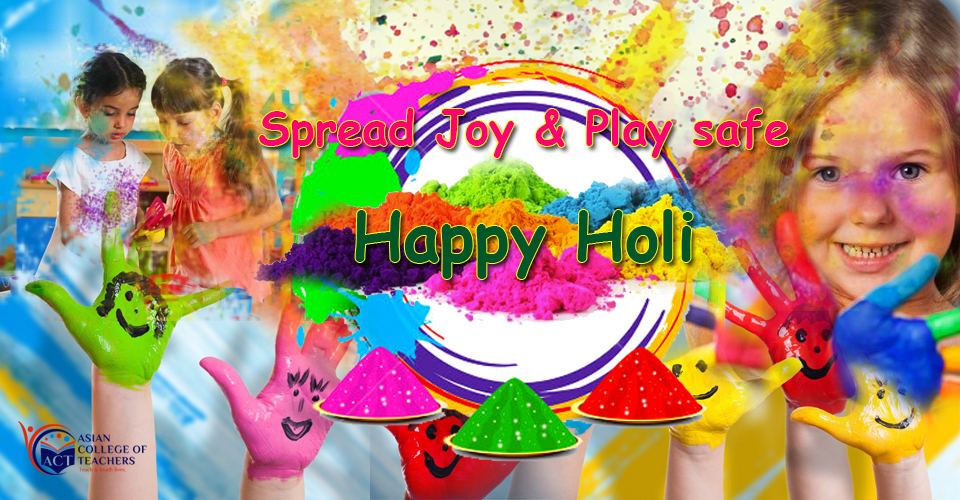Celebrate Holi through the Eyes of Their Soul
28th February 2018

The colours of happiness are not seen by eyes by the visually impaired children but are felt by the inner vision. For the visually impaired children, there is no existence of any visual colours. In reality, vision loss is an incredibly variable experience, both in terms of its causes and how it affects one's sight.
Developing from the incapability to capabilities:
The loss of visual ability denies them from the physical experience that colours have to offer. However, that does not make them incapable to feel and experience the joys colours bring to life.
The visually impaired child feels the colours of happiness through Holi perceives things around them with their senses. They are encouraged to rely on hearing, touch and feel that their educators with disability teacher training program encourage them to utilize to the best of their capabilities.
Although the children with visual impairment do not know the difference between any colours yet they are encouraged to enjoy the loving joyful touch of ‘gulal’ (colour) while applying them to each other.
Spread colours far and wide:
Holi is a festival of colours, joy and togetherness. This beautiful occasion creates special memories that bring people together. This Holi spread your colours far and wide. Fill the lives of the visually impaired with colourful hopes, dreams and aspirations.
The festival of colours not only spreads cheer in their lives but also goes a long way to strengthen bonds amongst everyone, irrespective of caste or creed, young learners across the globe, with or without special needs.
Colours may not hold the physical significance to the visually impaired children but involving them in the celebration depicts the true sense of Holi. The differently-abled children with visual impairment need to be perceived as happy and independent. The biggest learning has been the fact that this section is capable of doing everything; they can talk and message on mobiles faster than visually-abled.
The aim of inclusive classrooms:
The aim of educators trained with special needs teacher is to create an inclusive world for visually impaired and other people with special needs in a way that does not portray them as a dependent.
The aim of inclusive classrooms is to include especially abled children in all kind of activities and celebrations and not to make them feel isolated. Their physical sight may be invalid, but that does not mean they are devoid of any human feelings and emotions. In fact, because they are unable to see, they are more eager to express their thoughts through verbal and other modes of communications.
The visually impaired child sees the world through the eyes of their soul. Inclusive classrooms activities convey the message that festivals are meant for sharing of joy in which the medium is immaterial. The aim of special needs teacher in India is to make visually impaired children feel that they are not detached from festivities of society in any way.
With constant inclusion with other children who do not have a visual impairment, they are encouraged to participate in the celebrations and activities of Holi celebrations. Activities such festive dance and musical programs they are encouraged to frolic and make merry.








